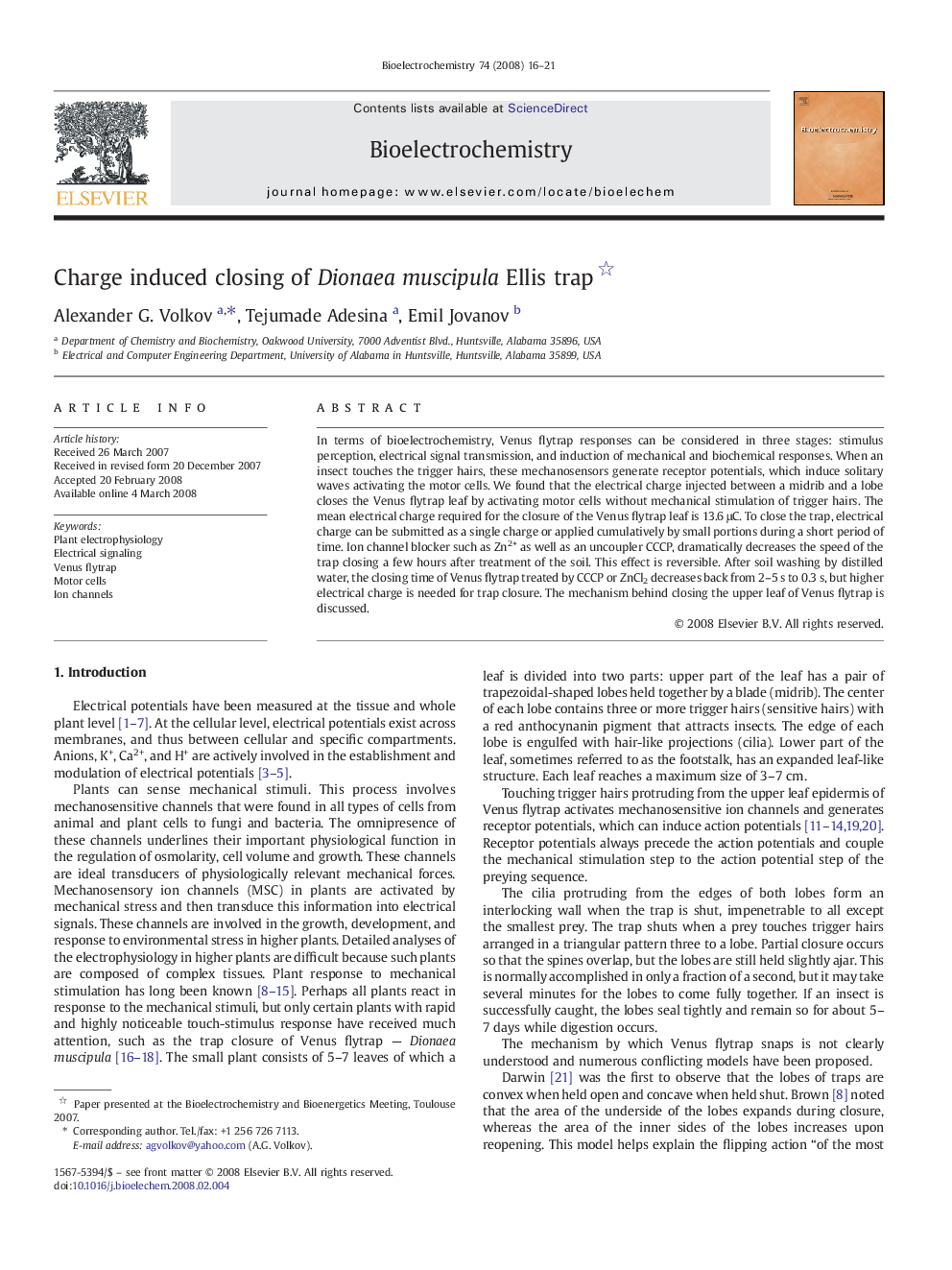| Article ID | Journal | Published Year | Pages | File Type |
|---|---|---|---|---|
| 10567032 | Bioelectrochemistry | 2008 | 6 Pages |
Abstract
In terms of bioelectrochemistry, Venus flytrap responses can be considered in three stages: stimulus perception, electrical signal transmission, and induction of mechanical and biochemical responses. When an insect touches the trigger hairs, these mechanosensors generate receptor potentials, which induce solitary waves activating the motor cells. We found that the electrical charge injected between a midrib and a lobe closes the Venus flytrap leaf by activating motor cells without mechanical stimulation of trigger hairs. The mean electrical charge required for the closure of the Venus flytrap leaf is 13.6 μC. To close the trap, electrical charge can be submitted as a single charge or applied cumulatively by small portions during a short period of time. Ion channel blocker such as Zn2+ as well as an uncoupler CCCP, dramatically decreases the speed of the trap closing a few hours after treatment of the soil. This effect is reversible. After soil washing by distilled water, the closing time of Venus flytrap treated by CCCP or ZnCl2 decreases back from 2-5 s to 0.3 s, but higher electrical charge is needed for trap closure. The mechanism behind closing the upper leaf of Venus flytrap is discussed.
Related Topics
Physical Sciences and Engineering
Chemistry
Electrochemistry
Authors
Alexander G. Volkov, Tejumade Adesina, Emil Jovanov,
